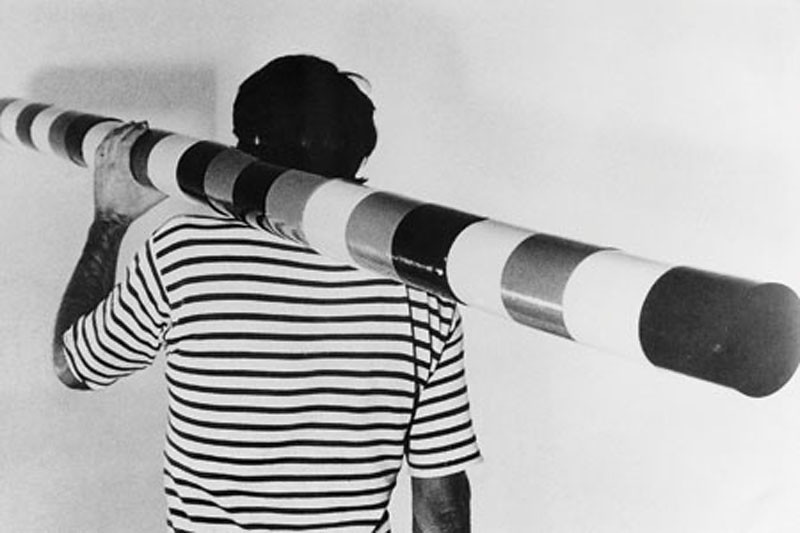“I started to get involved with people who were creating their own worlds. I realized I wanted to do that, and I hoped people would like it.” - Faye Toogood
vs
Andre Cadere worked to a system of numerical order that he had developed himself, containing errors as a secret code. Cadere developed his Barres de Bois as mobile works of art in 1970, something that he could take everywhere with him and use at any time, anywhere.


Faye Toogood of Studio Toogood...
(element table in resin, from Assemblage 2) table with VOID.
"Toogood’s knack for sourcing materials and her compulsion to group unlike things derives from a love of research that harks back to her art history studies at Bristol University, and her stint at World of Interiors; when she was 22, the leading British interior design magazine hired her as an intern. “I didn’t even know what a stylist was,” she recalls, but she certainly learned. In her 10 years there, she rose to the position of senior stylist before opening her own studio in 2008, to branch out beyond creating dreamy sets that lasted no more than a few days.
Studio Toogood has since designed interiors, both temporary and permanent, for various creative brands. For a display at Comme des Garcons’ flagship store in Tokyo, she took the fashion label’s deconstructed plaid – a defining pattern in its 2010 men’s collection – and recreated it on stacks of white cubes with coloured electrical tape. At The Rug Company’s New York store, she covered the walls with archival images of English houses, then painted them with graffiti. The plan was to eventually turn the murals into tapestries."
(via here, Azure magazine), (dezeen screen with Faye Toogood), (past YHBHS post on Studio Toogood)...
Andre Cadere referred to his wood bars as “peinture sans fin” – “unlimited painting” – which redefined the boundaries of the medium and broke with traditional ways of seeing. The form of the rod does not prescribe a privileged point of view – it has no front nor back, no bottom nor top – but offers itself to multiple presentations instead: The bars can be laid out on the floor, fixed to the wall or can lean against it; they can also, theoretically, be moved from one place to another. (via here)
James Hyde said Andres Cadere is "probably the most important artist of the 1970s whom you've never heard of." When he died at 45, he left behind about 180 segmented wooden "barres."
--------------------
0 comments:
Post a Comment